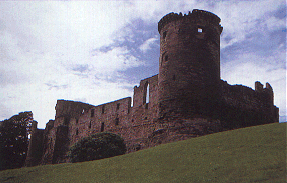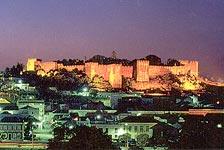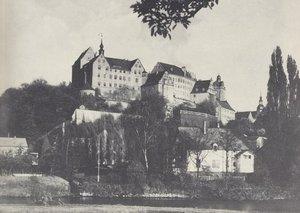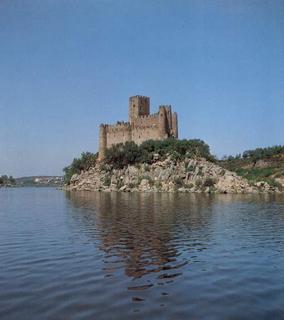Since Greek and Roman times, man has strived to establish some type of a fortification for protection and shelter. Over the pursuing centuries these evolved into a form of military and residential places known as castles.
When William the Conqueror, conquered England in 1066, his armies quickly erected wooden palisades (a fence of stakes or iron railings forming an enclosure or defence) establishing a presence in the former Saxon kingdoms. Many of these fortresses were constructed on sites that had previously been fortified in pre-Roman times, then by the Romans themselves and lastly by the Saxons who established the first kingdoms there.
As times became less turbulent and settled, the Normans became integrated into every day life and were eventually accepted by the local populace. These wooden palisades slowly began to disappear, to be replaced with stone. Any new fortifications built from that time onward were constructed entirely from stone.
In
Europe , this manifested into a design consisting of a single tower and outer buildings.
In the mountains there was no shortage of rocky hilltops on which to build these new bastions. In the lower lying areas, however, islands and peninsulas were much sought after for their ease of defence.
In the British Isles the Normans began to dig ditches to create a small hill or mound when one couldn’t be found to build on. These mounds became the first "motte and bailey" castles, some of which were built on top of old Iron Age hill forts.
A "motte" was the conical hill of dirt that was built as the main defence for the "keep", which was were the Lord and his family resided and sought refuge whilst trying to govern their surrounding territory. The keep was basically a tower with one room per floor and usually contained 3 to 4 floors.
Later, a walled area known as a “bailey” began to appear around the keep with another at the base of the motte. Its function was to help protect the keep's support functions which grew up around the original tower: grain storage, wood and metal workshops, military barracks, wells, chapels and sometimes a garden or a great hall where formal functions and meetings were held.
Over the intervening years, the design and style of
British Castles would appear in various forms throughout the castle building era.
Eventually, the motte itself began to be replaced with stone and a new style of British castle began to appear. These castles were built without the motte altogether. The tower keep, however, remained.
The ditch that had separated the “motte” from the bailey became a moat (a deep, wide defensive ditch surrounding a castle or town), either dry or stone-lined, or filled with water from a nearby river or lake. These Moats became a significant part of the castles design.
In the 12th century, the Crusaders began their travels to the Middle East in the name of god, encountered a differing style of castle to that which they had become accustomed to. One of the most popular style of castles encountered had curtain walls with mural towers: palisades but with towers along its length from which to fire on attackers. This developed into concentric walls, giving the besieging army multiple obstacles to overcome just to get into the castle. The tower keep sometimes became part of the wall in this type of fortification.
The advent of gunpowder and the development in weaponry, i.e. muskets and cannon from the 13th to 15th century, saw the rapid decline in the importance of building castles for defence, and yet again, another change in design. Castles had to be built with thicker and thicker walls. Eventually, evolution caught up. Not being able to keep abreast of technological advancements in fire power of the era, the defensive capability of these great castles was severely diminished, causing them to become obsolete.
In the 18th and 19th century British castles were built for very different reasons. The Aristocracy, who were nostalgic for the past, had the most wonderful and splendid castles built for their pleasure. The most passionate of these builders was
(Mad King) Ludwig of Bavaria in the 19th century and his fairytale castle -
Neuschwanstein.
I hope you enjoyed The Evolution of the British Castle – A short history
If you want to find out about more of the histories that lie behind some of Europe’s most picturesque, mysterious and notorious castles? Unravelling the legends and myths behind some of their most celebrated and not so renowned castles in a voyage of discovery and adventure…!
Then pay a visit to my website at
Guide to Castles of Europe.
There you will discover the history and myths of some of Europe’s most famous castles: Windsor Castle, TheTower of London, Dracula’s Castle and Blarney Castle (the home of the Blarney stone) to name a few.
I look forward to sharing in your experiences and discoveries that you have made from your journeys around Europe, visiting her many picturesque and unique Castles. Send me a message with your tales and I will post them on my website, so that the world can discover these hidden treasures too.
Best wishes and have a great day!
Stuart
You may copy or redistribute this article in its entirety including all links





